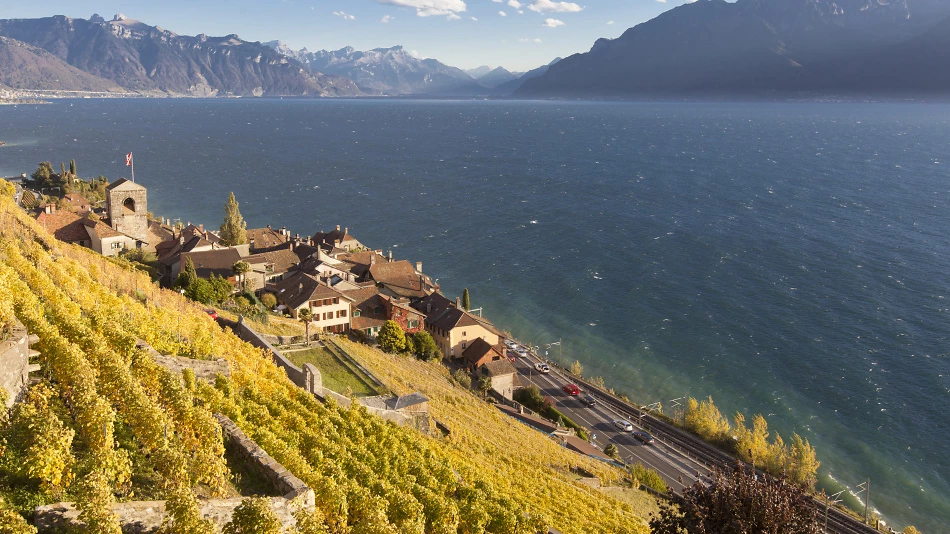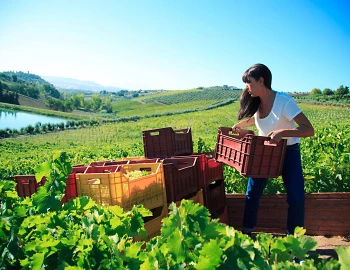Pierre-Luc Leyvraz
Pierre-Luc Leyvraz is often called the "King of Chasselas". That this definition is anything but exaggerated strikes you at the latest once you have tasted his Saint-Saphorin "Les Blassinges", marked by the terroir and very typical
The vineyard is cultivated according to the principles of integrated production (IP). The estate covers a total of 3.3 hectares divided into ten plots, each just a few hundred metres apart. They all belong to the area classified as a UNESCO World Heritage Site.
White wines from Pierre-Luc Leyvraz
from Pierre-Luc Leyvraz
The soils of the Lavaux area were formed about 25 million years ago. The thrust which, at the time, would definitively define the course of the Rhône and the location of Lake Geneva was formed through the Alpine folds. During the various successive glacial cycles, the glacier "planed" the slope and thus "corrected" its shape, while at the same time dragging away Alpine sediments deposited in the form of moraines. The material that makes up this soil has been lying here since the retreat of the last Rhone glacier, about 15,000 years ago. As early as the 10th century AD, Cistercian monks cleared the thickets on the steep slopes to plant the first vines. The rocks and stones left behind by the glacier were used to build the spectacular walls that still support the terraced vineyards of this estate today.
The soil composition varies slightly, but its high limestone content has always remained the same. It was during the 1950s that the first vines gave the name "Les Blassinges" to the estate. Today, the famous St-Saphorin "Les Blassinges" is composed of a subtle blend of Chasselas from different plots, but all grown in the heart of this appellation. In other words, a true "Grand Cru".

Producer

Viñedos Terranoble
Soon after their arrival, the first Spanish colonists were already remarking the ideal vine growing conditions in Chile. In this country of great contrasts, embedded between the Andes and the Pacific Ocean, the many wine regions differ significantly through micro-climate, topography and altitudes, and geological properties. TerraNoble owns vineyards in three different regions and so can provide different varieties with the most suitable growing conditions.

Fattoria Nicodemi / Fam. Nicodemi
Between the deep blue of the Adriatic Sea to the east and the snowy peaks of the Gran Sasso to the west you find the rolling and charming landscape of Abruzzo. On a hilltop lies the pretty village of Notaresco and not far from it the winery of Elena and Alessandro Nicodemi.

The Wild Alps
In 2016, Theresia Angel-Hämmerle and Peter Angel from Vorarlberg founded “The Wild Alps”, based in Balgach, Switzerland, to develop and produce an exceptional portfolio of fine spirits. Their vision was to capture the quintessence of gin, whisky, rum and vodka to really excite aficionados.


